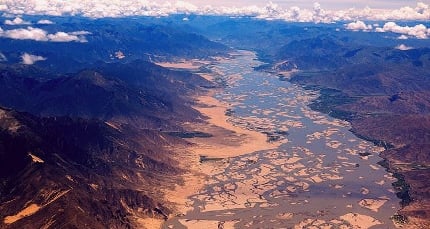The Chinese Academy of Sciences (CAS) signed memorandums of understanding earlier last month with Nepalese research institutions the International Centre for Integrated Mountain Development (ICIMOD) and Tribhuvan University.
The agreement is part of the Third Pole Environment (TPE) initiative, a research programme CAS set up in 2009 to study the Tibetan plateau. The area is often referred to as the “third pole” because it contains huge quantities of ice in the form of glaciers that feed major Asian rivers.
Glacial melt in Nepal has previously been a source of flooding: in 2008 a devastating flood hit northern India after a river breached flood defences, leading some to call for better cross-border monitoring of conditions in the mountain regions where the rivers begin.
ICIMOD could now become an important player in environmental research spearheaded by TPE in the Himalayan region, says Dong Qi of the bureau of international cooperation at CAS. The agreement will also open the way for government institutions to cooperate on environmental research, he says.
Areas for cooperation outlined in the memorandum include: monitoring air quality levels; studying high-altitude wetland and river systems to share information on water discharge and strengthen flood forecasting; and researching climate change impacts, for example the effect of pollutants such as elemental carbon on glacial melt and fresh water availability in the region.
“This agreement will help address issues closely related to sustainable development and allow cross-border collaborations on environment research so that all partners can contribute and benefit from the cooperation,” Dong tells SciDev.Net.
In the past few decades, China has collaborated with various South Asian countries. Its Bureau of Hydrology and the China Meteorological Administration is working with ICIMOD, the World Meteorological Organisation and bodies focused on flooding, hydrology, energy, geology and meteorology in Bangladesh, Bhutan, India, Nepal and Pakistan to establish a regional flood information system to share real-time data and strengthen flood forecasting.
But this is the first time that China and Nepal have formally agreed to cooperate on scientific research and knowledge sharing related to the sustainable development of mountain areas.
“The goal of [our] cross-border programmes is to introduce a community-based approach to improve their livelihood and conserve the environment so that people will take the lead even after the projects are phased out,” says Yi Shaoliang, a natural resources specialist at ICIMOD.
“Natural ecosystems don’t follow national boundaries, so we need cross-boundary collaborations to fill in the knowledge gap between countries to better understand our environments,” he says.
While cross-border collaborations on environmental protection are increasing, Yi says hurdles remain. “Such partnership includes politically sensitive areas near the borders where data and information sharing becomes a challenge sometimes,” he says. “We need to make the process more transparent and ensure there are qualified people to carry out studies even in the most remote of terrains.”
This article was originally published on SciDev.Net.
